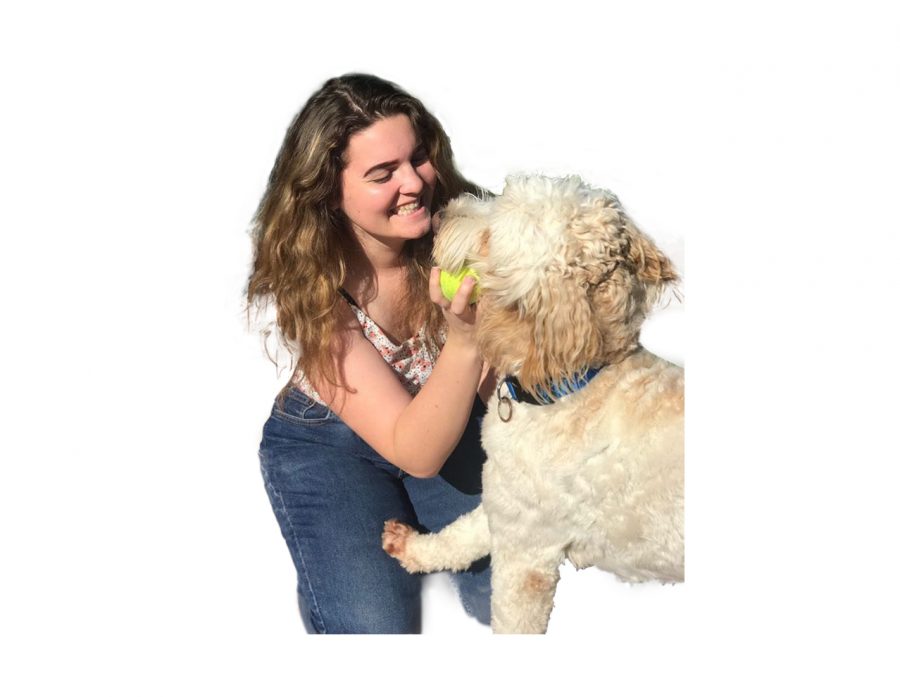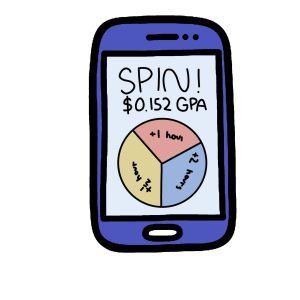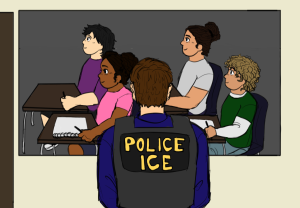Emotional Support Dogs should be an available resource for students
Junior Victoria Webb bonds with her emotional support dog Phoenix.
February 27, 2020
You come home from school emotionally drained, only to return back to school in the same headspace as yesterday, repeating a vicious cycle. But today is different—a canine companion has come and seemingly swept all your problems away. Emotional Support Dogs (ESDs) have become extremely important in helping Bonita Vista High (BVH) students engage with a much more serious topic, being the crutch of students with Persistent Depressive Disorder (DDP) and Generalized Anxiety Disorder (GAD). This would mean that ESDs should be an available resource to the BVH community.
Even though California schools have educational accommodations such as the 504 plan, both students and teachers alike are unaware of the emotional outlet that could be readily available to them. The BVH community has held the sentiment that they would like to see the implementation of ESD as a resource to students and staff alike. According to a poll conducted by the Crusader on Feb. 11th, out of the 459 students polled, 31.2 percent answered that they have either expressed or been diagnosed with DDP or GAD, yet 84.7 percent of the 459 have interacted with an ESD on campus. Fortunately, 64 percent either “strongly agreed” or “somewhat agreed” that they would like to see the formation of a club that would be able to host ESDs so they may be accessible as both a student and staff resource.
Health teacher Shannon Bruce recalls her previous experience with an ESD and her International Baccalaureate (IB) students. She reflected on the time an ESD was brought to IB testing and how it helped students’ mental well-being.
“During the IB testing, they brought in emotional support animals, and the kids could go walk out and be with these emotional support animals when they started feeling anxious or stressed out for exams. And that was really my first time that I saw kids or students here really interact with the emotional support animals,” Bruce said. “And it was really calming for them. I mean, they were smiling, and they were having a good time.”
However, the inclusion of ESDs does not come without its flaws. For example, it is often argued that dogs could distract students or take time away from their studies. This, instead, should be seen as a blessing rather than a curse, as a distraction could be what students need to alleviate stress and sorrow. IB senior Charlsie Santana de Valdez stated that a temporary distraction could be just what BVH students need to help alleviate their tension.
“If [students] were to be distracted, I think it’s kind of a good thing […] school is stressful and seeing the dogs can help calm [the students] down, ” Santana de Valdez said
Santana De Valdez has been involved in a multitude of extracurriculars, including water polo, being Vice President of Improv Club, having a job and directing a school play. She expressed how an ESD as a school resource would benefit her despite not being a “dog person.” The moments of spending time with animals had allowed her to live in the moment and temporarily forget about her tight schedule.
“I’m not really a dog person. I’m not really an animal person at all, but having that 10 minutes, 20 minutes, whatever time I spent with an animal made me forget the plans I made […] I think it will go right away. I think supporting kids’ emotional and mental well being is a good thing,” Santana de Valdez said.







